From Bench to Business: A Framework for Commercializing Medical and Healthcare Innovations
This paper synthesizes practical, evidence-informed best practices into a comprehensive framework tailored to medical and healthcare innovators, with an eye to low- and middle-income country (LMIC) contexts. The framework integrates accepted international regulatory guidance (IMDRF/FDA/EU), clinical research standards (ICH GCP, Declaration of Helsinki), technology transfer and IP management principles (AUTM, WIPO), and contemporary financing realities for medtech ventures.

Abstract
Translating biomedical and health research into safe, effective, and scalable products or services requires coordinated action across scientific validation, intellectual property (IP), regulatory planning, market discovery, financing, governance, manufacturing readiness, and ethical oversight. This paper synthesizes practical, evidence-informed best practices into a comprehensive framework tailored to medical and healthcare innovators, with an eye to low- and middle-income country (LMIC) contexts. The framework integrates accepted international regulatory guidance (IMDRF/FDA/EU), clinical research standards (ICH GCP, Declaration of Helsinki), technology transfer and IP management principles (AUTM, WIPO), and contemporary financing realities for medtech ventures. We present operational checklists, milestone-driven funding alignment, M&E indicator sets, and an actionable 90/180/360-day roadmap designed to reduce technical and commercial risk and accelerate responsible adoption. Key recommendations emphasize early alignment between IP strategy and business model, early mapping of regulatory evidence needs, structured human-centered market discovery, staged financing linked to de-risking milestones, and ethics/equity baked into commercialization plans. ICH Database+4autm.net+4WIPO+4
1. Introduction
Biomedical discovery and clinical insight have enormous potential to improve health outcomes, but the pathway from bench to bedside is fraught with technical, regulatory, financial, ethical, and organizational barriers (technology transfer failures, regulatory delays, misaligned IP strategy, or poor market fit). Successful commercialization therefore requires an integrated, staged approach that aligns evidence generation, intellectual property, regulatory planning, and business development. This paper proposes such an integrated framework and supplies practical tools and references for innovators, TTOs (technology transfer offices), funders, and early-stage teams. The guidance combines accepted international standards and high-quality secondary literature with operational templates drawn from established technology transfer and medtech practice. autm.net+1
2. Conceptual background and evidence base
2.1 Technology transfer & IP in health innovation
Technology transfer plays a central role in translating university and clinical research into products; best-practice guidance emphasizes early disclosure, clear inventor/institution agreements, staged filings, and alignment of IP protection with the commercialization pathway (licensing vs. spinout). AUTM offers practical principles for managing academic IP and commercialization pathways. WIPO documents explain how patent strategy must be balanced with public health needs and market access. autm.net+1
2.2 Regulation and clinical evidence requirements
Regulatory frameworks determine required evidence for market access. International harmonization efforts (IMDRF) inform regulatory approaches for emerging categories such as Software as a Medical Device (SaMD), and major regulators (FDA, EU MDR) publish explicit classification and premarket guidance that should shape early evidence plans. Clinical data generated under ICH Good Clinical Practice (GCP) and ethically governed by the Declaration of Helsinki provides the accepted standard for patient-facing interventions. WHO and regional regulatory model frameworks offer guidance for LMIC settings. World Health Organization+5IMDRF+5U.S. Food and Drug Administration+5
2.3 Financing and market realities for medtech
Recent analyses show volatility in venture funding for biotech/medtech and underscore the importance of staged, milestone-linked financing and blended instruments (grants, strategic partnerships, seed/VC) that match the de-risking pathway of medical technologies. Reviews of medtech startups identify recurrent gaps: underdeveloped go-to-market plans, underestimated regulatory timelines, and insufficient clinical evidence. These findings support a staged funding ladder aligned to defined technical and regulatory inflection points. Nature+1
3. Methods — synthesis approach
This paper synthesizes: (1) authoritative regulatory and ethical guidance (FDA, IMDRF, EU MDR, ICH, WMA/Declaration of Helsinki, WHO frameworks); (2) technology transfer and IP management guidance (AUTM, WIPO, AdvaMed/industry best practice); and (3) recent empirical and review literature on medtech commercialization and financing. From these sources we distilled an operational framework, decision rubrics, and concrete templates (readiness rubric, one-page commercialization brief, IP staging matrix, pilot protocol checklist, M&E indicator set, funding ladder and cap table example). All assertions that draw on external standards or empirical evidence are cited to the primary sources listed in References. autm.net+2WIPO+2
4. Integrated commercialization framework
The framework is staged: (A) Readiness & decision, (B) IP & legal, (C) Market discovery & value proposition, (D) Evidence & regulatory planning, (E) Funding and financial planning, (F) Team & governance, (G) Manufacturing & supply chain, (H) Go-to-market & procurement strategies, (I) Monitoring, Evaluation & Ethics. Each stage includes operational checklists and milestone-linked deliverables.
4.1 Readiness & decision (go/no-go)
A structured commercialization readiness rubric helps teams avoid sunk-cost escalation. Key elements: reproducibility, clinical relevance, preliminary safety, regulatory classification hypothesis, IP novelty/FTO, minimum viable team and funding for the next 12 months. Producing a one-page Commercialization Decision Brief (problem, evidence, IP status, regulatory flags, near-term milestones, budget, recommendation) is recommended as the first deliverable. This triage step is consistent with technology transfer best practice to prioritize resources. autm.net
4.2 Intellectual property strategy
IP strategy must be matched to the business model (patents for hardware/novel diagnostics/therapeutics; copyright/trade secret/contracts for software/platforms). Key actions: early invention disclosure, provisional filing when justified, staged international protection linked to funding milestones (national → PCT → national phases), and a Freedom-to-Operate search before heavy investment. WIPO and AUTM provide guidance on balancing patent breadth with public health and cost considerations. Maintain an IP tracker with deadlines and costs. WIPO+1
4.3 Market discovery & value proposition
Human-centered customer discovery (clinicians, procurement officers, patients, payers) converts qualitative insights into an MVP specification and realistic TAM/SAM/SOM estimates. Adopt interview guides, persona mapping, and hypothesis testing (Lean Startup/Customer Development principles) to validate willingness-to-pay and procurement pathways before scaling. Published scoping reviews of medtech startups underscore market-fit failures as a frequent cause of early-stage attrition and therefore recommend investment in market discovery. PubMed Central+1
4.4 Evidence generation & regulatory planning
Map likely regulatory classification and evidence needs early. For SaMD and advanced software, follow IMDRF and FDA clinical evaluation guidance; for devices, follow EU MDR/WHO model frameworks for LMIC regulatory considerations. Draft a clinical evaluation plan that specifies endpoints, sample sizes (or feasibility justification), data management, and adverse event reporting consistent with ICH GCP and local ethics committee requirements (Declaration of Helsinki). Early QMS activities (document control, design history, supplier qualification) reduce late-stage manufacturing and compliance risk. World Health Organization+4IMDRF+4U.S. Food and Drug Administration+4
4.5 Funding strategy — stage-linked financing
Align the funding ladder with de-risking milestones: translational grants and institutional funds for discovery/de-risking; blended grants and strategic partnerships for pilots; seed/VC and procurement contracts for scale. Prepare investor materials (one-page summary, 3-slide teaser, 3-year financials, cap table) and milestone-linked budgets that clearly map use-of-funds to evidence generation and regulatory gates. Recent financing climate analyses suggest conservatism around medtech public markets — making clear, near-term commercialization milestones critical for investor confidence. Nature
4.6 Team, governance & founder transitions
Assemble clinical, technical, commercial, regulatory, and legal expertise early. For academic founders, formalize role transitions, conflict-of-interest mitigation, and equity vesting schedules to prevent later disputes. Use advisory boards with defined deliverables rather than honorary titles. AUTM and industry guidance highlight transparent revenue share and inventor agreements to facilitate university–industry partnerships. autm.net+1
4.7 Manufacturing, supply chain & quality
Design for manufacturability early to control unit costs; qualify suppliers and document quality agreements. Implement a basic QMS (document control, design history file, non-conformance and CAPA processes) as prototypes move toward volume production and regulatory submissions. WHO guidance underscores that robust regulation and QMS are central to ensuring safety, especially in LMIC procurement contexts. World Health Organization+1
4.8 Go-to-market strategies & procurement
Select routes (licensing, spinout with direct sales, distributor partnerships, SaaS subscriptions, or donor/procurement channels) based on product type and buyer landscape. In LMICs, donor and public procurement cycles often drive early adoption. Prepare a procurement evidence dossier (clinical and economic benefits) and pilot implementation packages (training, integration support) to reduce adoption friction. World Health Organization
4.9 M&E, impact, ethics & equity
Build an M&E dashboard: clinical endpoints or valid surrogates, adoption metrics (sites/users), operational metrics (uptime, time-to-result), economic metrics (cost per patient), and equity indicators (demographic coverage, local benefit-sharing). Ethical governance (consent, data governance, benefit sharing) must be integrated from the outset consistent with the Declaration of Helsinki and local regulations. World Medical Association+1
5. Operational tools and milestone roadmap (practical deliverables)
We recommend the following immediate deliverables and a 90/180/360-day milestone roadmap tied to funding and regulatory gates.
5.1 Immediate deliverables (first 30 days)
-
One-page Commercialization Decision Brief (readiness rubric).
-
Formal invention disclosure to TTO.
-
10 stakeholder interviews (users, buyers, influencers).
-
Draft pilot protocol and line-item 12-month budget.
-
Identify clinical champion and at least one pilot site.
5.2 90 / 180 / 360-day milestones
-
0–90: finalize IP disclosure, complete 20 interviews, recruit pilot partners, secure initial pilot funding.
-
90–180: run pilot (1–3 sites), collect primary endpoints, iterate prototype, begin QMS documentation.
-
180–360: complete regulatory dossier submission steps (where applicable), secure commercialization partner or seed funding, finalize manufacturing plan.
These deliverables map to the stages recommended by AUTM, regulatory agencies, and industry practice and create a defensible story for funders and procurement officers. autm.net+1
6. Discussion
This integrated framework synthesizes internationally accepted standards with pragmatic templates needed to operationalize commercialization in diverse settings, including LMICs. Key insights include:
-
Alignment of IP and business model reduces wasted legal fees and accelerates negotiations. WIPO and AUTM guidance stress matching protection scope to geographic and business objectives. WIPO+1
-
Regulatory-first mindset mitigates late-stage surprises — early classification and QMS initiation are high-leverage activities supported by WHO/IMDRF/FDA guidance. World Health Organization+1
-
Human-centered market discovery avoids the common failure mode of technology-push without buyer demand; medtech reviews show market-fit gaps as a key risk. PubMed Central
-
Staged financing linked to de-risking milestones reflects current investor preferences and the volatile public markets for biotech/medtech. Nature
Limitations
While this paper draws on high-quality global guidance and recent literature, it is a synthesis and not an empirical trial. Local regulatory specifics, procurement rules, and health system incentives vary widely; teams must consult local regulators and procurement experts when planning country-level rollouts. Additionally, funding landscapes continually evolve and teams should seek current local investor intelligence.
7. Conclusion & recommendations
Commercializing medical and health innovations is feasible but requires disciplined, stage-wise planning that aligns scientific evidence, IP, regulation, market demand, and financing. Teams should adopt the operational checklists and milestone roadmap proposed here, engage TTOs early, map regulatory evidence needs at project outset, and match funding sources to concrete de-risking deliverables. Ethics, data governance, and benefits-to-community must be explicit deliverables, not afterthoughts. The recommended framework is designed to be practical and adaptable to both high-income and LMIC settings.
References
AUTM. (n.d.). Guidelines for technology transfer: Principles and guidelines. AUTM. Retrieved September 2025, from https://autm.net/about-tech-transfer/principles-and-guidelines. autm.net
AdvaMed. (2019). University–industry best practices guide. AdvaMed. https://www.advamed.org/wp-content/uploads/2019/02/advamed-best-practices-guide-041719.pdf. AdvaMed®
World Intellectual Property Organization (WIPO). (n.d.). Patents and health. https://www.wipo.int/en/web/patents/topics/public_health. WIPO
World Health Organization. (2017). Global model regulatory framework for medical devices including in vitro diagnostic medical devices. WHO. https://www.who.int/publications/i/item/9789241512350. World Health Organization
International Medical Device Regulators Forum (IMDRF). (n.d.). Software as a Medical Device (SaMD). https://www.imdrf.org/working-groups/software-medical-device-samd. IMDRF
U.S. Food and Drug Administration (FDA). (2018). Software as a Medical Device (SAMD): Clinical Evaluation. https://www.fda.gov/regulatory-information/search-fda-guidance-documents/software-medical-device-samd-clinical-evaluation. U.S. Food and Drug Administration
EUR-Lex. (2017). Regulation (EU) 2017/745 of the European Parliament and of the Council on medical devices. https://eur-lex.europa.eu/eli/reg/2017/745/oj/eng. EUR-Lex+1
International Council for Harmonisation (ICH). (2016). E6(R2) Good Clinical Practice: Integrated Addendum to ICH E6(R1). https://database.ich.org/sites/default/files/E6_R2_Addendum.pdf. ICH Database
World Medical Association. (2013). Declaration of Helsinki — Ethical Principles for Medical Research Involving Human Subjects. https://www.wma.net/policies-post/wma-declaration-of-helsinki/. World Medical Association
Hodgson, J. (2024). Biotech and medtech funding trends: Nature Biotechnology. https://www.nature.com/articles/s41587-024-02126-1. Nature
Kalinowska-Beszczyńska, O., et al. (2024). MedTech start-ups: A comprehensive scoping review. PLOS ONE / PubMed Central. https://www.ncbi.nlm.nih.gov/pmc/articles/PMC11302850/. PubMed Central
WIPO. (2025, Feb 3). Unlocking the power of intellectual property in medical technology. WIPO Magazine. https://www.wipo.int/web/wipo-magazine/articles/unlocking-the-power-of-intellectual-property-in-medical-technology-71322. WIPO
What's Your Reaction?
 Like
0
Like
0
 Dislike
0
Dislike
0
 Love
0
Love
0
 Funny
0
Funny
0
 Angry
0
Angry
0
 Sad
0
Sad
0
 Wow
0
Wow
0


















































































